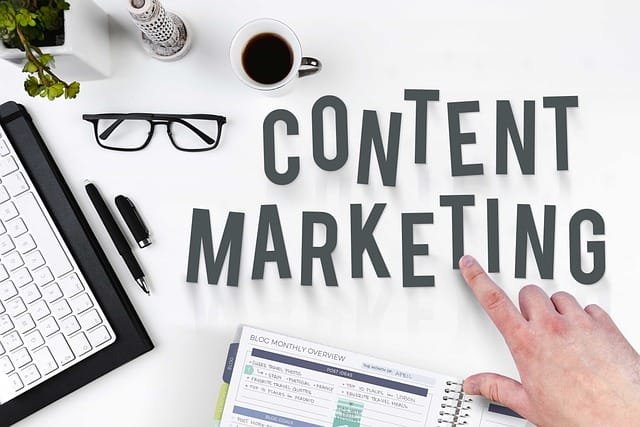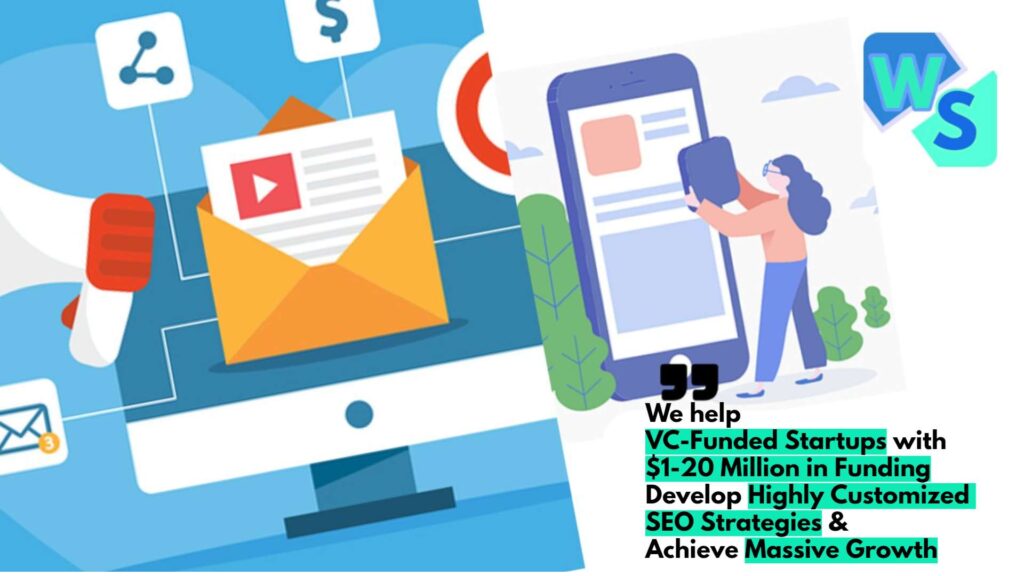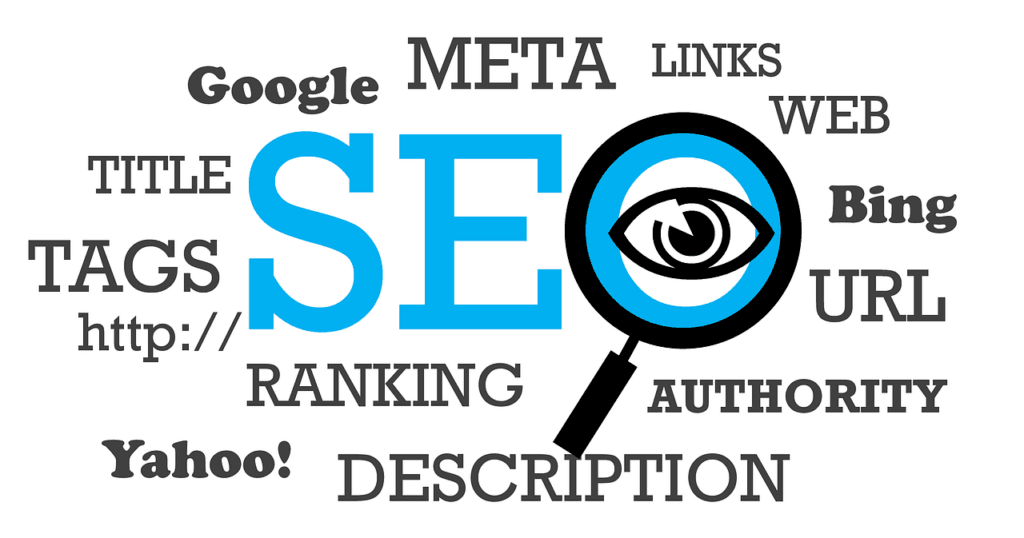Understanding Email Marketing
Understanding the fundamentals of email marketing is essential for you as a CEO, business owner, CMO, or marketing executive looking to boost your brand’s visibility and engagement.
Importance of Email Marketing
Email marketing is recognized as one of the most reliable strategies for building customer relationships, boosting sales, and increasing website traffic. This channel enables you to promote products or services, maintain engagement with potential customers, and communicate less intrusively through special offers, updates, and content dissemination (Brasco).
Engaging in email campaigns can also establish trust and credibility with your audience, providing a direct pathway to deliver brand stories, important news, and promotional content. According to research, email campaigns are among the most effective means to convey information about a brand and generate sales, making them a crucial component of any marketing strategy.
Key Benefits of Email Marketing:
| Benefit | Description |
|---|---|
| Relationship Building | Develop long-term connections with customers. |
| High ROI | Email marketing delivers one of the highest returns on investment. |
| Direct Audience Engagement | Communicate directly with your target audience. |
| Performance Tracking | Easily measure campaign outcomes with various metrics. |
Email Marketing Strategies
Implementing successful email marketing campaigns involves several key strategies. You will need to identify your target audience, create personalized emails, and understand the campaign goals, whether it be enhancing brand awareness or generating sales. Selecting the appropriate type of email campaign—such as promotional emails or newsletters—is equally crucial to achieving your objectives.
In addition, the timing of your email sends plays a vital role in engagement. Studies suggest optimal times for sending emails include Tuesday, Wednesday, and Thursday at 10 am, 2 pm, or 8 pm according to engagement research.
Core Components of Effective Email Marketing Strategies:
| Component | Description |
|---|---|
| Audience Identification | Determine the target demographic for your campaign. |
| Goal Setting | Define the objectives you want to achieve. |
| Content Relevance | Ensure all emails are relevant, engaging, and accurate. |
| Optimal Sending Times | Schedule emails for times that maximize engagement. |
By harnessing the power of email marketing and leveraging the expertise of an email marketing agency, you can significantly enhance your outreach efforts, improve customer engagement, and achieve your marketing goals effectively.
Best Practices for Email Marketing
Implementing effective email marketing requires adherence to industry standards and best practices. This section covers GDPR compliance, personalization and engagement, and call-to-action optimization to help you create successful campaigns.
GDPR Compliance
When conducting email marketing, adherence to the General Data Protection Regulation (GDPR) is critical, especially when targeting recipients in Europe. To align with GDPR, your opt-in processes must comply with regulations. This means avoiding pre-checked boxes for subscription options, ensuring readers clearly choose whether they want to receive emails. Violating these guidelines, such as by purchasing email lists, can lead to substantial penalties and damage your brand’s reputation.
In addition to GDPR, familiarize yourself with the CAN-SPAM Act of 2003, which grants recipients the right to opt-out of email communications and outlines penalties for violations (HubSpot Blog). Ensuring compliance with these regulations protects your business and fosters trust with your audience.
Personalization and Engagement
Personalization is crucial in fostering engagement and improving the overall performance of your email marketing campaigns. Sending emails from a real person, rather than a generic company alias, can significantly enhance your open and clickthrough rates. Personal names and credible email addresses are seen as more trustworthy, increasing the chances of your messages being opened (HubSpot Blog).
To build a personalized experience, segment your audience based on interests, demographics, and behaviors. Tailoring your content to meet the specific needs of each group can lead to higher engagement. For instance:
| Personalization Strategy | Description |
|---|---|
| Dynamic Content | Customize content based on segmentation, such as product recommendations or event invitations that resonate with different audience groups. |
| Targeted Offers | Send tailored promotions that reflect the recipient’s previous interactions with your brand. |
| Personalized Greetings | Address recipients by their first names in the subject line and greeting to create a more inviting tone. |
Call-to-Action Optimization
The call-to-action (CTA) is a crucial element of your email campaigns, driving recipients to take desired actions. To optimize your CTAs, consider the following best practices:
One Clear CTA: Include a single, prominent call-to-action button in each email to minimize confusion and ensure recipients know what action to take.
Visible Placement: Position your CTA in a visible location, ideally above the fold, so that it is easily accessible without scrolling.
Action-Oriented Language: Utilize compelling and action-oriented language in your CTA text. Phrases like “Get Started,” “Shop Now,” or “Learn More” can prompt immediate engagement.
By adhering to GDPR compliance, focusing on personalization and engagement, and optimizing your call-to-action, your email marketing campaigns will be well-equipped to connect with your audience effectively. To enhance your overall strategy, consider leveraging email marketing software that offers advanced features for segmentation and automation.
Email Metrics and Tracking
To measure the success of your email marketing efforts, it is essential to track specific metrics. These metrics provide insight into how well your campaigns are performing and help you identify areas for improvement. Below are the key email metrics you should consider.
Clickthrough Rate (CTR)
The Clickthrough Rate (CTR) is a critical metric that measures the effectiveness of your email content. You can calculate the CTR using the formula:
[
\text{CTR} = \left(\frac{\text{Total clicks OR unique clicks}}{\text{Number of delivered emails}}\right) \times 100
]
For example, if you delivered 10,000 emails and received 500 total clicks, your CTR would be 5% (HubSpot). A higher CTR indicates that your audience finds your email content engaging.
| Campaign Type | Delivered Emails | Total Clicks | CTR (%) |
|---|---|---|---|
| Campaign A | 10,000 | 500 | 5% |
| Campaign B | 8,000 | 420 | 5.25% |
Open Rate
The Open Rate measures the percentage of recipients who open your emails. This metric is crucial for assessing the effectiveness of your subject lines and sending times. Approximately 31% of marketers rank open rate among the top two metrics they track. Do keep in mind that open rates can be misleading due to issues like image-blocking settings and the influence of Apple’s Email Privacy Protection feature.
| Campaign Type | Emails Sent | Emails Opened | Open Rate (%) |
|---|---|---|---|
| Campaign A | 10,000 | 3,000 | 30% |
| Campaign B | 8,000 | 2,500 | 31.25% |
Conversion Rate
The Conversion Rate reflects how many recipients clicked on a link in your email and completed a desired action, such as making a purchase or filling out a form. The formula for calculating the conversion rate is:
[
\text{Conversion Rate} = \left(\frac{\text{Number of conversions}}{\text{Total emails delivered}}\right) \times 100
]
For instance, if you delivered 10,000 emails and 600 recipients completed your desired action, your conversion rate would be 6%.
| Campaign Type | Total Delivered | Conversions | Conversion Rate (%) |
|---|---|---|---|
| Campaign A | 10,000 | 600 | 6% |
| Campaign B | 8,000 | 400 | 5% |
Bounce Rate
Bounce Rate represents the percentage of emails sent that could not be delivered successfully, which can be categorized as “hard” or “soft.” Managing your bounce rate is critical, as ISPs use it to determine your sender reputation. High bounce rates can negatively impact your email deliverability.
| Campaign Type | Emails Sent | Bounces | Bounce Rate (%) |
|---|---|---|---|
| Campaign A | 10,000 | 100 | 1% |
| Campaign B | 8,000 | 50 | 0.625% |
List Growth Rate
The List Growth Rate tracks how quickly your email list is growing. To calculate this rate, use the formula:
[
\text{List Growth Rate} = \left(\frac{\text{New subscribers} – \text{Unsubscribes} + \text{Spam complaints}}{\text{Total email addresses on the list}}\right) \times 100
]
Maintaining a healthy List Growth Rate ensures your email list remains robust and effective for marketing (HubSpot).
| Month | New Subscribers | Unsubscribes | List Growth Rate (%) |
|---|---|---|---|
| January | 200 | 20 | 2% |
| February | 150 | 15 | 1.7% |
By tracking these key email metrics, you can gain valuable insights into your email marketing performance and optimize your campaigns for better results. If you are considering hiring an email marketing agency to help you improve your strategies, these metrics will serve as essential benchmarks.
Email Marketing Objectives
Email marketing serves various purposes for businesses, and understanding these objectives can help you design effective campaigns. Here are some key email marketing objectives that you may want to focus on:
Traffic Generation
One of the primary goals of email marketing is to drive traffic to your website. According to a survey, 45.2% of marketers prioritize generating web traffic through their email campaigns. By including well-placed links in your emails, you can entice subscribers to visit your site, explore products, or read informative content.
To enhance traffic generation, consider:
- Crafting engaging subject lines that encourage opens.
- Providing clear calls-to-action that direct readers to your website.
- Offering exclusive content or promotions available only through your email.
Brand Awareness
Establishing brand awareness is essential for long-term success, and email marketing can play a significant role. About 43.9% of marketers focus on increasing brand awareness through email campaigns (HubSpot). Email allows you to share your brand’s story, showcase values, and communicate updates with your audience directly.
Strategies to boost brand awareness might include:
- Consistent branding elements in your email designs, such as logos and colors.
- Sharing customer testimonials or case studies that reflect brand values.
- Regularly updating your audience with news and events related to your brand.
Lead Nurturing
Another key objective of email marketing is lead nurturing. This involves building relationships with potential customers and guiding them through the sales funnel. Effective email campaigns can help segment your audience and provide targeted content that addresses their needs at various stages of their buying journey.
For successful lead nurturing, consider:
- Using personalized content tailored to specific audience segments.
- Offering value through educational emails, such as how-to guides or webinars.
- Following up with potential customers at critical touchpoints, encouraging them to move closer to making a purchase.
Revenue Generation
Ultimately, revenue generation remains a top goal for many email marketing campaigns, with 57.8% of marketers aiming to increase sales (HubSpot). Emails can drive conversions by presenting special offers and promoting products or services directly to subscribers.
Key tactics for revenue generation include:
- Highlighting limited-time offers or promotions.
- Featuring best-selling products or upselling relevant items.
- Utilizing customer data to recommend personalized product suggestions based on previous purchases.
By setting clear objectives for your email marketing campaigns, you can effectively engage your audience, build relationships, and ultimately drive measurable business results. If you’re interested in enhancing your email campaigns, explore our resources on email marketing campaigns and related strategies.
Effective Email Campaigns
Creating compelling email campaigns is crucial for engaging your audience and driving results. This section covers strategies for subject lines, creative examples from successful brands, personalization techniques, and how to incorporate holiday themes into your email marketing efforts.
Subject Line Strategies
The subject line is the first impression of your email. A clever subject line can significantly increase open rates. For example, Birchbox’s catchy subject line “We Forgot Something in Your February Box!” effectively grabs attention and piques curiosity (HubSpot).
When crafting your subject lines, consider the following strategies:
- Use actionable language
- Create a sense of urgency
- Personalize the subject to the recipient
- Keep it concise and clear
Creative Campaign Examples
Successful email campaigns often use creativity to engage their audiences. One notable example is Dropbox’s email titled “Try out one of our products!” This campaign featured a polite, actionable message encouraging users to explore their solutions with a transparent call-to-action (HubSpot).
Another example is Paperless Post’s campaign for National Rosé Day, which used less common holidays as marketing opportunities. This creative approach resonated with users and encouraged engagement through themed content (HubSpot).
| Brand | Campaign Example | Strategy Used |
|---|---|---|
| Birchbox | “We Forgot Something in Your February Box!” | Attention-grabbing subject line |
| Dropbox | “Try out one of our products!” | Polite, actionable messaging |
| Paperless Post | National Rosé Day campaign | Creative holiday-themed content |
Personalization Techniques
Personalization can significantly impact email engagement. Spotify excelled in personalization by sending an email to fans of Olivia Rodrigo, including an exclusive offer for a cassette of her album. This strategy combined elements of exclusivity and nostalgia to drive engagement and likely purchases.
When personalizing your email campaigns, consider the following:
- Use the recipient’s name in the subject line or body
- Segment your audience based on interests or past behaviors
- Provide tailored recommendations based on previous interactions
Holiday-themed Campaigns
Incorporating holiday themes into your email marketing can capture your audience’s attention. By celebrating unique occasions, you stand out and create relatable content. Paperless Post demonstrated this with their National Rosé Day campaign, effectively leveraging a specific holiday to engage users.
For planning holiday-themed campaigns, keep these tips in mind:
- Align your products or services with the holiday theme
- Use festive colors and imagery in your design
- Time your campaigns to coincide with relevant holidays
By employing these strategies in your email marketing campaigns, you can increase engagement and drive conversions effectively. For further insights on enhancing your campaigns, consider exploring specialized email marketing software or consulting with an experienced email marketing agency.
Benefits of Hiring an Agency
Choosing to collaborate with an email marketing agency can significantly enhance your marketing efforts. Here are the key benefits you can expect when you partner with professionals in the field.
Specialized Expertise
Email marketing agencies provide specialized expertise that is difficult to replicate in-house. They have a dedicated team of professionals with extensive knowledge and experience in crafting effective email marketing strategies. These experts are skilled in utilizing various tools like Klaviyo and other industry-standard software to optimize your campaigns (Flowium). This specialized knowledge ensures that your campaigns are not only well-designed but also targeted effectively to your audience.
| Expertise Area | Description |
|---|---|
| Strategic Planning | Development of effective email marketing strategies to drive results. |
| Design | Creating visually appealing emails that capture attention. |
| Deliverability | Ensuring your emails reach inboxes rather than spam folders. |
| Analytics | Monitoring and optimizing campaigns based on performance data. |
Full-Service Solutions
A full-service email marketing agency can handle every aspect of your email marketing initiatives. From strategy creation to campaign design, deliverability, and performance analytics, they manage the entire process. This comprehensive approach allows you to focus on other aspects of your business without worrying about the intricacies of email marketing (Flowium). With a wide range of services, these agencies ensure that every aspect of your email campaigns is professionally executed, leading to higher engagement and success rates.
| Service Category | Included Services |
|---|---|
| Strategy | Development of tailored email strategies based on your business goals. |
| Design | Creation of professional, attractive email templates. |
| Execution | Scheduling and sending out campaigns while managing audience segmentation. |
| Reporting | Providing data-driven insights and performance metrics for improvement. |
Improved Campaign Effectiveness
By leveraging the expertise and full-service offerings of an email marketing agency, you can significantly improve the effectiveness of your campaigns. Agencies have streamlined processes and established methods that enhance engagement rates, increase open rates, and ultimately drive conversions. For businesses that may lack a cohesive email strategy or are struggling with engagement, hiring an agency can provide the necessary boost to maximize your marketing efforts (Flowium).
| Effectiveness Metric | Improvement Potential |
|---|---|
| Engagement Rates | Professional strategies can lead to higher engagement. |
| Open Rates | Expert subject lines and timing can significantly improve open rates. |
| Conversion Rates | Focused strategies can enhance direct sales and lead generation. |
Collaborating with an email marketing agency elevates your marketing strategy, providing you with the tools and expertise necessary to grow your brand effectively. By investing in professional assistance, you can ensure the success of your email marketing campaigns without compromising the quality of other areas of your business. For more insights into email marketing, explore email marketing campaigns or other related topics.
Pricing and Working with Agencies
When considering an email marketing agency to elevate your email marketing efforts, understanding the pricing structure and what to expect in terms of costs is essential. This section will break down how agencies typically structure their pricing, what you can expect in terms of monthly budget, and the factors that influence pricing.
Retainer Basis
Many email marketing agencies operate on a retainer basis, which means you would pay a set fee each month for their services. This model allows for a continuous partnership, offering you the advantage of having a dedicated team that becomes familiar with your brand, goals, and audience.
- Typical Retainer Fees: Agencies usually charge between $2,500 and $10,000+ per month, depending on the complexity and scope of services provided. The retainer fee includes strategic planning, campaign creation, execution, and ongoing performance analysis.
Monthly Budget Range
Understanding the monthly budget needed for email marketing services can help you plan your expenses effectively. Below is a breakdown of common budget ranges based on the typical services provided by email marketing agencies:
| Service Category | Monthly Budget Range |
|---|---|
| Basic Campaign Management | $2,500 – $5,000 |
| Advanced Strategy and Analytics | $5,000 – $10,000+ |
| Comprehensive Service Packages | $10,000+ |
This budget allocation will help you gauge what your organization can afford while assessing the potential return on investment for hiring an agency.
Factors Affecting Pricing
Several factors can influence the pricing of email marketing services, including but not limited to:
- Scope of Work: The extent of services required, such as campaign strategy development, email design, and A/B testing.
- Frequency of Campaigns: How often you plan to run email campaigns—monthly, bi-weekly, or weekly campaigns will require different budgets.
- Audience Size: Larger email lists may need more sophisticated segmentation and targeting, which can increase costs.
- Agency Expertise: Agencies with more experience or specialized expertise typically charge higher rates due to their established methods and successful track records.
When evaluating potential email marketing agencies, consider these factors to find the best fit for your needs while staying within your budget. For further insight into how different agencies operate, look into digital marketing agencies or direct response marketing strategies.
Enhancing Email Campaigns
To maximize the effectiveness of your email marketing efforts, it is essential to focus on enhancing various aspects of your campaigns. Key areas to consider include audience segmentation, personalization trends, mobile optimization, and deliverability best practices.
Audience Segmentation
Segmenting your email marketing campaigns based on customer characteristics can lead to more personalized messages and increased engagement. You can segment your audience by location, gender, interests, and purchase history. This tailored approach helps optimize your campaigns over time and can significantly impact your overall campaign success.
| Segmentation Criteria | Benefits |
|---|---|
| Location | Target relevant offers based on geographical trends. |
| Gender | Tailor marketing messages to resonate with different demographics. |
| Interests | Create content that aligns with the preferences of specific groups. |
| Purchase History | Offer personalized recommendations based on past purchases. |
Personalization Trends
Personalization continues to be a significant trend in email marketing. Emails that are personalized tend to be more relevant to recipients, which leads to increased chances of opening and engaging with the content. Implementing personalized marketing strategies can enhance user experience and increase the likelihood of conversions.
Common Personalization Tactics:
- Using the recipient’s name in the subject line or greeting
- Highlighting products or services based on previous interactions
- Sending tailored content based on subscriber preferences
Mobile Optimization
With more than half of all emails opened on mobile devices, optimizing your emails for mobile users is crucial to avoid distortion and low click-through rates (DesignLoud). Consider these mobile development best practices:
| Mobile Optimization Tips | Description |
|---|---|
| Responsive Design | Ensure your emails are adaptable to various screen sizes. |
| Short Subject Lines | Keep subject lines concise to avoid truncation on smaller screens. |
| Clear CTAs | Use large, easily clickable buttons to enhance navigation. |
| Simple Layout | Use a single-column format for easy scrolling and readability. |
Deliverability Best Practices
Email deliverability is critical to the success of your campaigns. Ensuring your emails reach subscribers’ inboxes rather than spam folders involves following best practices:
- Use a verified email sender domain to enhance trust.
- Monitor key metrics, such as spam rates and open rates, for consistent improvements.
- Maintain a clean email list by removing inactive subscribers regularly.
For more insights on improving your email marketing efforts, explore related topics such as email marketing software and email marketing campaigns. By focusing on these areas, you can strengthen your email marketing strategy and improve overall engagement and performance.




















